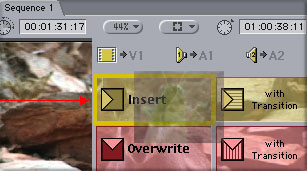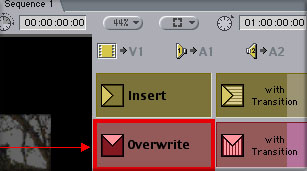
Book Review - Final Cut Pro 
April 22, 2002
The Easy Guide to Final Cut Pro

Book Review - Final Cut Pro 
April 22, 2002
The Easy Guide to Final Cut Pro
ISBN 0-9542160-0-8
Review By Ken Stone
This is the first book that I have reviewed that has Color art as well as Black and White. The use of color in depicting the Viewer, Canvas, Timeline and other FCP windows helps demonstrate what is going on and is particularly helpful in showing FCP overlays.
The Easy Guide to Final Cut Pro was recently reprinted and briefly covers the new features found in FCP 3, but again, not in depth. The Easy Guide does cover all aspects of editing in FCP for the beginner and devotes most of it's pages to this subject. The section on Output, like Set up is brief. At the end of the book there is a rather complete section on authoring and burning DVDs. The book comes with a CD that contains video material that the reader can use in doing exercises and working their way through the books lessons.
The Easy Guide to Final Cut Pro is very much a 'hand book', a 'primer' if you will. Short, clear and to the point. It provides an excellent quick introduction into FCP editing. It will get you up and running on FCP in short order. I like the book.
Short book - short review. (grin)
Enjoy,
--ken
Book Excerpt from 'The Easy Guide to Final Cut Pro'.
In the Timeline you should now have several shots edited together. Position the Scrubber Bar in the Timeline at the beginning of the Sequence. Press the upward arrow on your keyboard (located to the right of the Space Bar) and you will find you are now able to skip forward between each of the shots. Press the downward arrow and you will find you can skip backwards through your shots, one by one.
List price: $25.95 U.S.
CD ROM PAL version only
128 pages
Book excerpt follows review.
The Easy Guide to Final Cut Pro, by Rick Young, is a great little book and at 128 pages this is a 'little' book compared to some of the behemoths that are out there. The Easy Guide owes its brevity to the fact that it is a 'simple' basic FCP book and deals with the different FCP functions in short, clear and concise lessons. This is not a 'nuts and bolts' book and does not go into great depth in areas such as set up. One page is devoted to Easy Set up for those using DV NTSC or DV Pal.
Table of Contents
By Rick Young
|
Skip Forwards |
Skip Backwards |
Now, position the Scrubber Bar in the middle of the Sequence.
1 Open a shot in the Viewer and mark the "in" and "out" points.2 Drag this shot over to the Canvas, however, this time, instead of releasing it over the Insert button, position it over the Overwrite button (marked red). Now release your mouse button.
3 The shot will be edited into the Timeline Ð but it will not push all of the other shots in front of it further along in the Sequence. Instead, it will write over a portion of the Sequence beginning where your Scrubber Bar is positioned.
|
RIBBED END |

EXPANDED VIEW |
|

CONTRACTED VIEW |
This is very useful when you have a Sequence that is long, and you wish to be able to view the entire Sequence on the screen in front of you. It is also useful when you wish to expand the Sequence for fine control to allow precise positioning of the Scrubber Bar.
To make completely clear the difference between Insert and Overwrite editing it is advisable to condense the Timeline so the entire contents are visible on screen. You will then be able to determine the type of edit: if the Timeline has been made longer, you have performed an Insert Edit; if the length does not change you have performed an Overwrite Edit.
To be able to see the difference between Insert and Overwrite editing:1 Position the scrubber bar on a shot change in the middle of the Timeline.

2 Open a shot in the Viewer and mark an "in" and "out" point.
3 Drag the shot from the Viewer to the Canvas and position it over the Insert button. Observe the Timeline as you release the mouse button and notice all other shots get pushed further along the Sequence.

4 Hold down the Apple key and press the letter 'Z'. This will undo the action you have just performed.
5 Repeat the procedure of dragging the shot from the Viewer to the Canvas, however, this time, release it over the Overwrite button. It should be apparent that a different effect has taken place. The shots in the Sequence are not pushed further along the Timeline Ð they all stay in exactly the same position. What has happened is that the shot you have just edited into the Sequence has written over a portion of the Timeline. The length is determined by your "in" and "out" points in the Viewer.

If you look at the top left of the Viewer you can see the duration of the shot you are working with. This is measured in seconds and frames. If you change the position of either your "in" or "out" points Final Cut calculates the new duration.

Note: it is not necessary to drag the video from the Viewer to the Canvas to perform an Insert or Overwrite Edit. If you prefer, mark the "in" and "out" points in the Viewer and press the yellow or red button at the bottom of the Canvas. Providing that you can remember that yellow is for Insert and red is for Overwrite then the functions can be accessed in this way.

It is also possible to perform these functions with a single keystroke: F9 can be used for Insert Editing and F10 for Overwrite Editing.
Apple has designed Final Cut Pro so that the same result can be achieved in a variety of ways. Providing that you learn one way to perform these essential functions you will then be able to complete the task at hand. Alternative methods can be learnt as you become more proficient with using the program.
You can purchase 'The Easy Guide to
Final Cut Pro' from the lafcpug store.
Copyright © 2002 by Rick Young
All Rights Reserved. This material is excerpted from The Easy Guide to Final Cut Pro and is used with permission.
Review copyright © www.kenstone.net 2002